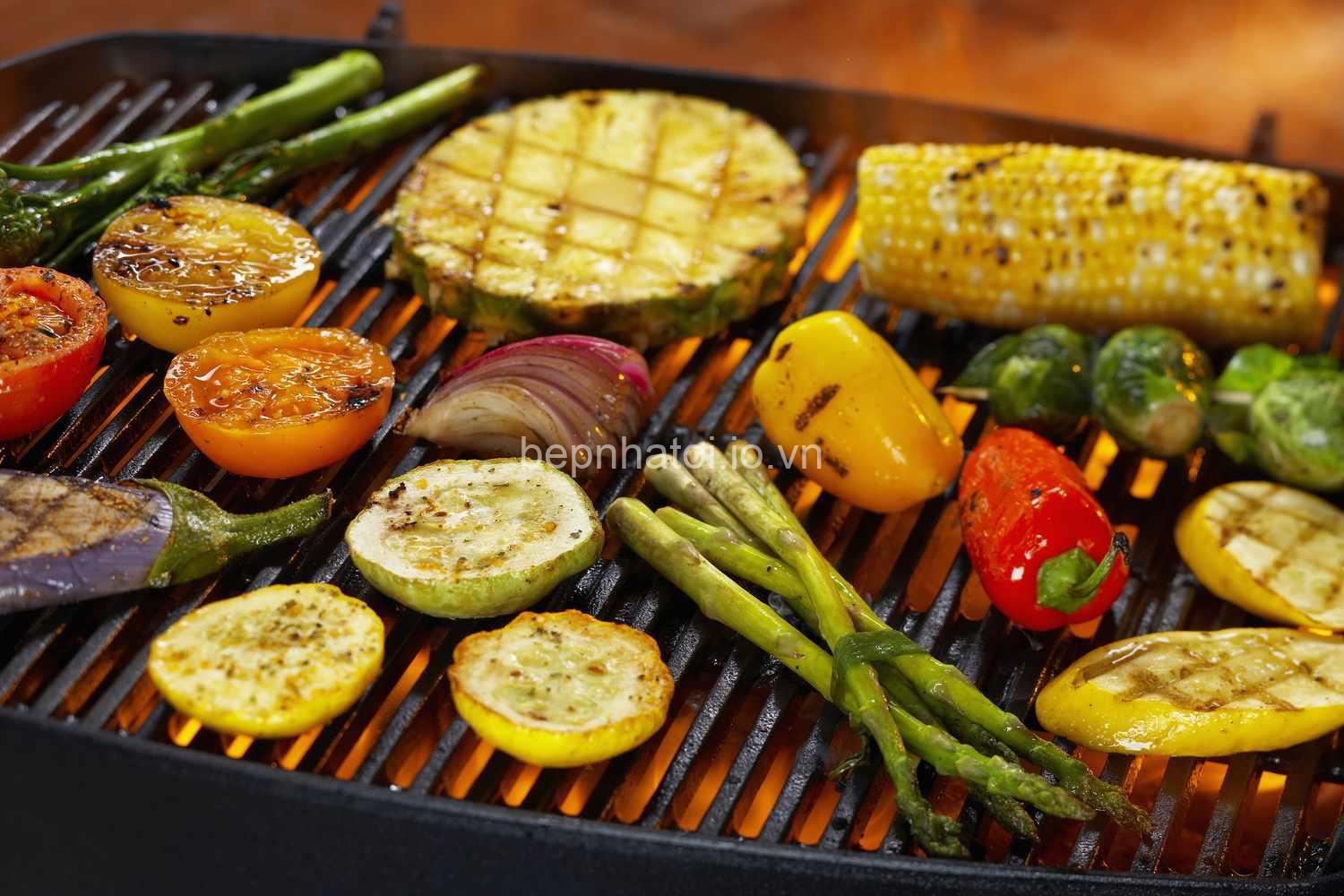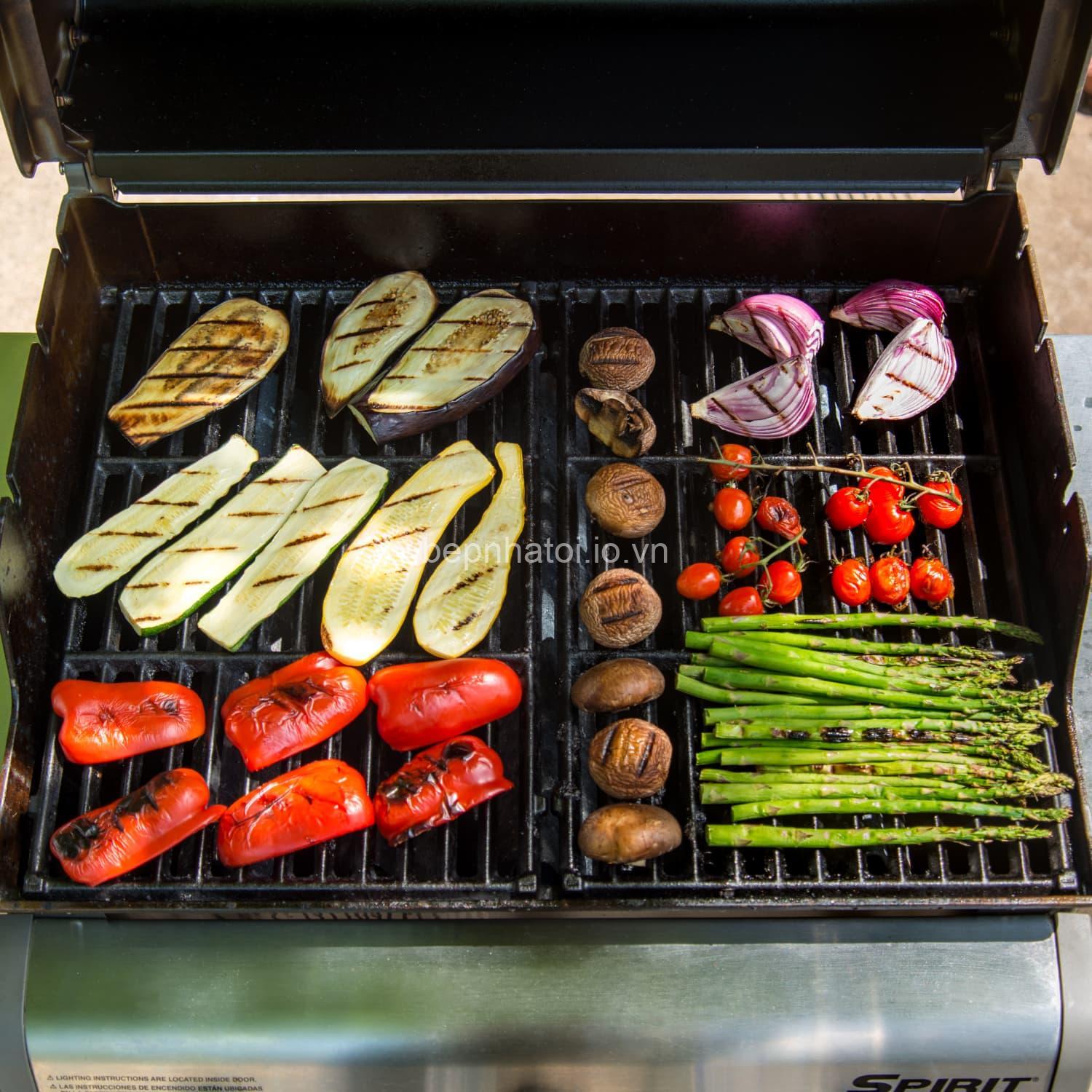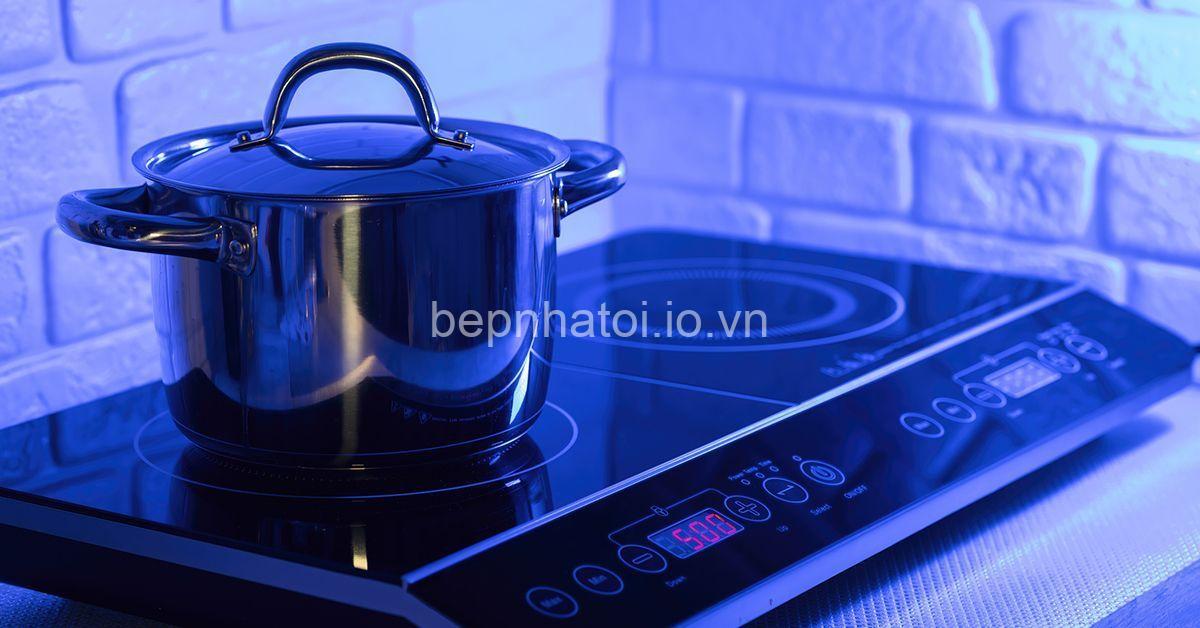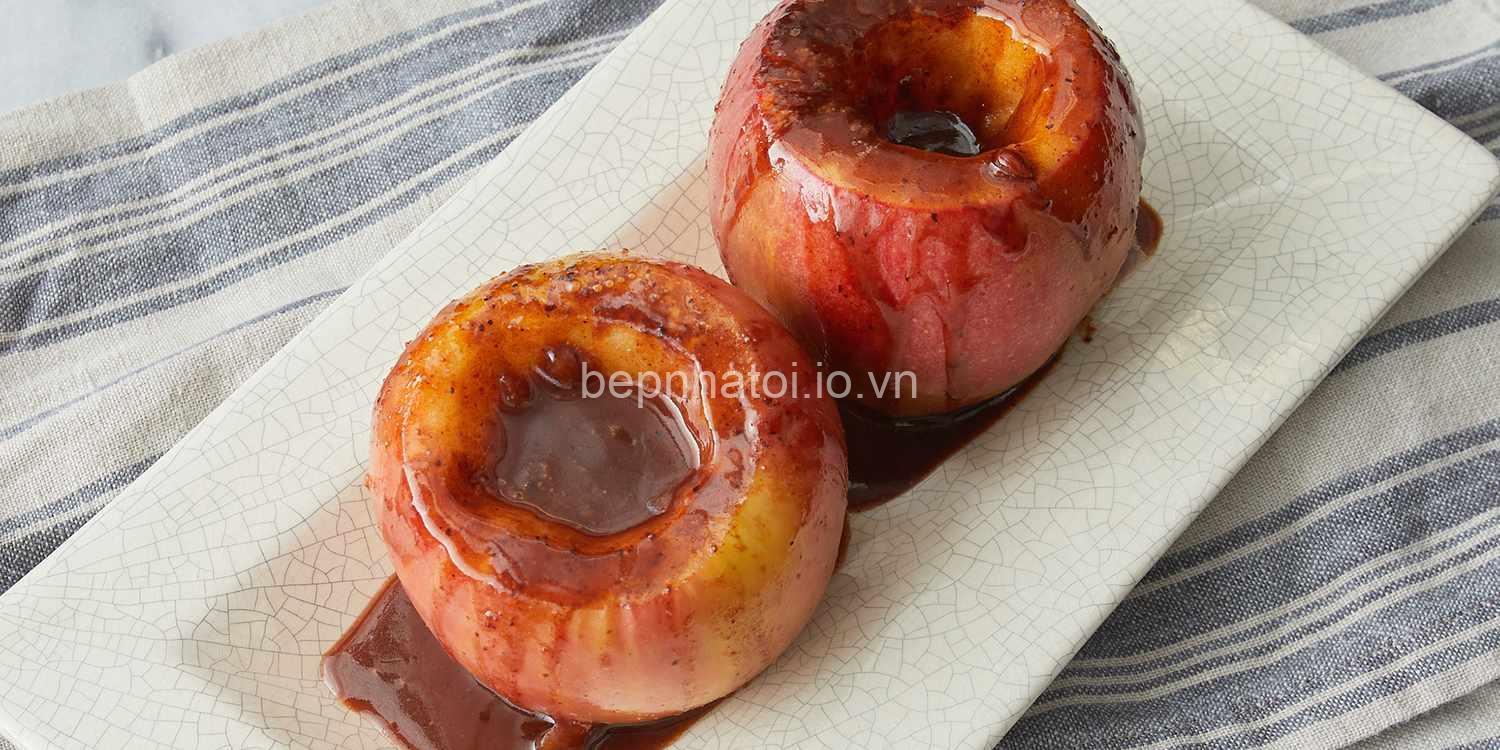
Direct vs. Indirect Grilling: Which Method Is Right for You?. In today’s article, bepnhatoi.io.vn will explore with you in the most detailed and complete way. See now!
Understanding the Basics of Direct and Indirect Grilling
Grilling, a beloved cooking method, involves applying heat to food over a direct source. However, there are two main ways to achieve this: direct and indirect grilling.
Direct grilling, the most common method, involves placing food directly over the heat source, whether it’s gas, charcoal, or wood. The heat is intense, creating a sear on the surface of the food. This technique is perfect for quickly cooking thin cuts of meat like burgers, hot dogs, and steaks. It also works great for grilling vegetables, adding a delicious smoky flavor.
Indirect grilling, on the other hand, uses a different approach. The food is placed away from the direct heat source, often on one side of the grill, while the heat source is on the other side. This creates heat zones—a hot zone directly above the heat source and a cooler zone where the food is placed. This method is ideal for cooking larger cuts of meat like roasts, whole chickens, and ribs, ensuring they are cooked evenly and thoroughly.

Direct Grilling: Advantages, Disadvantages, and When to Use It
Direct grilling is known for its fast cooking times and ability to create a crispy exterior on your food. This technique also brings out a delicious smoky flavor, adding depth to your dishes.
However, direct grilling can be a bit more challenging. The intense heat makes it easy to overcook food if you’re not careful. Flare-ups, caused by fat dripping onto the hot coals or grates, can also be a concern. This technique is best suited for thinner cuts of meat that don’t require a long cooking time.
Here’s when to use direct grilling:
- Thin cuts of meat: Burgers, hot dogs, steaks
- Vegetables: Peppers, onions, zucchini, asparagus
- Seafood: Fish, shrimp, scallops
Indirect Grilling: Advantages, Disadvantages, and When to Use It
Indirect grilling offers a more forgiving approach to cooking. The even heat distribution ensures that food cooks thoroughly without burning. This method also allows for lower temperatures, making it perfect for cooking thicker cuts of meat. The lower heat helps to tenderize and moisturize the meat, resulting in a juicy and flavorful dish.
While indirect grilling is excellent for achieving even cooking, it does take longer than direct grilling. It also requires a bit more attention to ensure the temperature remains consistent throughout the cooking process.
Here’s when to use indirect grilling:
- Thick cuts of meat: Roasts, whole chickens, ribs
- Large cuts of meat: Pork shoulder, brisket
- Poultry: Whole chickens, turkey
Choosing the Right Method for Your Food
The choice between direct and indirect grilling ultimately depends on the type of food you’re cooking. Here are some key considerations:
- Type of food: Thin cuts of meat typically require direct grilling, while thicker cuts benefit from indirect grilling.
- Thickness of the food: Thicker cuts of meat are best cooked indirectly to prevent overcooking.
- Desired level of doneness: If you want a crispy exterior, direct grilling is the way to go. For a juicy and tender interior, indirect grilling is better.
For example, a steak would be perfect for direct grilling to achieve a delicious sear and crispy exterior. But a whole chicken, on the other hand, would benefit from indirect grilling to cook it evenly and retain its moisture.
Tips and Techniques for Direct and Indirect Grilling
Direct Grilling Tips:
- Preheat your grill: This ensures even heat distribution and helps to achieve a perfect sear.
- Use a meat thermometer: A meat thermometer is essential for checking the internal temperature of your food to ensure it’s cooked to the desired level of doneness.
- Flip food only once: Flipping your food too often can lead to moisture loss, resulting in a dry and tough dish.
Indirect Grilling Tips:
- Use a water pan: A water pan placed under the food helps to create a more even temperature and prevent the meat from drying out.
- Monitor the grill temperature closely: Use a thermometer to ensure the temperature remains consistent throughout the cooking process.
- Use a probe thermometer: A probe thermometer is a must-have for monitoring the internal temperature of your food, especially when using indirect grilling.
Exploring Other Grilling Methods
While direct and indirect grilling are the most common techniques, other grilling methods exist.
- Smoking: This technique uses wood chips or wood pellets to create smoke that infuses the food with a delicious flavor.
- Broiling: Similar to direct grilling, broiling uses intense heat from above to cook food quickly.
Conclusion
Understanding the difference between direct and indirect grilling is crucial for achieving delicious and well-cooked results every time. While direct grilling is great for quick sears and thin cuts of meat, indirect grilling is ideal for cooking larger cuts of meat evenly.
Experiment with both techniques and see which one you prefer. And if you’re looking for more grilling tips, recipes, and information, visit my website bepnhatoi.io.vn.
Don’t forget to leave a comment below and share your grilling experiences! I’d love to hear from you. Happy grilling!
FAQs: What’s the Difference Between Direct and Indirect Grilling?
What is the main difference between direct and indirect grilling?
The main difference lies in the heat source’s position. In direct grilling, the food is directly over the heat source, while in indirect grilling, the food is placed away from the direct heat source. This leads to different temperature zones and cooking times.
What are the benefits of direct grilling?
Direct grilling provides quick cooking times, a delicious sear, and a crispy exterior. It’s ideal for thin cuts of meat and vegetables.
What are the benefits of indirect grilling?
Indirect grilling ensures even cooking, prevents overcooking, and is ideal for thicker cuts of meat that require a longer cooking time.
Which method is best for a whole chicken?
Indirect grilling is the preferred method for whole chickens. It allows for even cooking and prevents the chicken from drying out.
Which method is best for burgers?
Direct grilling is ideal for burgers to achieve a crispy exterior and a juicy interior.
Entity – Attribute – Value (EAV):
- Entity: Direct Grilling, Attribute: Heat Source, Value: Gas, Charcoal, Wood
- Entity: Indirect Grilling, Attribute: Heat Source, Value: Charcoal, Wood
- Entity: Steak, Attribute: Cooking Method, Value: Direct Grilling
- Entity: Chicken, Attribute: Cooking Method, Value: Indirect Grilling
- Entity: Gas Grill, Attribute: Temperature Control, Value: High
- Entity: Charcoal Grill, Attribute: Temperature Control, Value: Medium-High
- Entity: Direct Grilling, Attribute: Cooking Time, Value: Fast
- Entity: Indirect Grilling, Attribute: Cooking Time, Value: Slow
- Entity: Direct Grilling, Attribute: Doneness, Value: Crispy Exterior
- Entity: Indirect Grilling, Attribute: Doneness, Value: Evenly Cooked
- Entity: Direct Grilling, Attribute: Risk, Value: Overcooking
- Entity: Indirect Grilling, Attribute: Risk, Value: Undercooking
- Entity: Burgers, Attribute: Best Method, Value: Direct Grilling
- Entity: Ribs, Attribute: Best Method, Value: Indirect Grilling
- Entity: Meat Thermometer, Attribute: Usage, Value: Checking Internal Temperature
- Entity: Water Pan, Attribute: Usage, Value: Maintaining Even Temperature
- Entity: Grill Grates, Attribute: Material, Value: Cast Iron, Stainless Steel
- Entity: Grill Cover, Attribute: Usage, Value: Protecting Grill from Weather
- Entity: BBQ Rub, Attribute: Function, Value: Enhancing Flavor
- Entity: Marinade, Attribute: Function, Value: Tenderizing and Flavoring
Entity, Relation, Entity (ERE):
- Entity: Direct Grilling, Relation: Uses, Entity: High Heat
- Entity: Indirect Grilling, Relation: Uses, Entity: Low Heat
- Entity: Steak, Relation: Cooked By, Entity: Direct Grilling
- Entity: Chicken, Relation: Cooked By, Entity: Indirect Grilling
- Entity: Gas Grill, Relation: Produces, Entity: Consistent Heat
- Entity: Charcoal Grill, Relation: Produces, Entity: Uneven Heat
- Entity: Meat Thermometer, Relation: Measures, Entity: Internal Temperature
- Entity: Water Pan, Relation: Creates, Entity: Even Temperature
- Entity: Grill Grates, Relation: Supports, Entity: Food
- Entity: BBQ Rub, Relation: Enhances, Entity: Flavor
- Entity: Marinade, Relation: Tenderizes, Entity: Meat
- Entity: Grill Cover, Relation: Protects, Entity: Grill
- Entity: Direct Grilling, Relation: Creates, Entity: Sear Marks
- Entity: Indirect Grilling, Relation: Creates, Entity: Even Doneness
- Entity: Direct Grilling, Relation: Results in, Entity: Crispy Exterior
- Entity: Indirect Grilling, Relation: Results in, Entity: Juicy Interior
- Entity: Overcooking, Relation: Caused By, Entity: Direct Grilling
- Entity: Undercooking, Relation: Caused By, Entity: Indirect Grilling
- Entity: Flare-Ups, Relation: Occur During, Entity: Direct Grilling
- Entity: Smoke Ring, Relation: Produced By, Entity: Indirect Grilling
Semantic Triple ( Subject, Predicate, Object):
- Subject: Direct Grilling, Predicate: Uses, Object: High Heat
- Subject: Indirect Grilling, Predicate: Uses, Object: Low Heat
- Subject: Steak, Predicate: Cooked By, Object: Direct Grilling
- Subject: Chicken, Predicate: Cooked By, Object: Indirect Grilling
- Subject: Gas Grill, Predicate: Produces, Object: Consistent Heat
- Subject: Charcoal Grill, Predicate: Produces, Object: Uneven Heat
- Subject: Meat Thermometer, Predicate: Measures, Object: Internal Temperature
- Subject: Water Pan, Predicate: Creates, Object: Even Temperature
- Subject: Grill Grates, Predicate: Supports, Object: Food
- Subject: BBQ Rub, Predicate: Enhances, Object: Flavor
- Subject: Marinade, Predicate: Tenderizes, Object: Meat
- Subject: Grill Cover, Predicate: Protects, Object: Grill
- Subject: Direct Grilling, Predicate: Creates, Object: Sear Marks
- Subject: Indirect Grilling, Predicate: Creates, Object: Even Doneness
- Subject: Direct Grilling, Predicate: Results in, Object: Crispy Exterior
- Subject: Indirect Grilling, Predicate: Results in, Object: Juicy Interior
- Subject: Overcooking, Predicate: Caused By, Object: Direct Grilling
- Subject: Undercooking, Predicate: Caused By, Object: Indirect Grilling
- Subject: Flare-Ups, Predicate: Occur During, Object: Direct Grilling
- Subject: Smoke Ring, Predicate: Produced By, Object: Indirect Grilling






